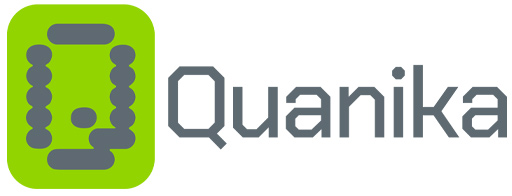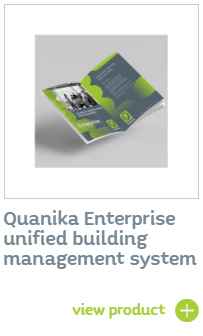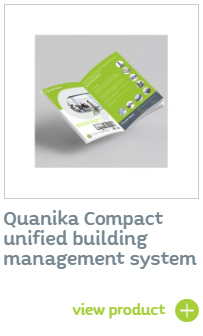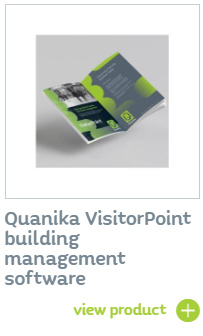Quanika Unified platform - now with Google Maps integration
Quanika’s unified building management platform now features Google Maps integration, giving users real-time visual control of multiple locations; streamlining security, access and facilities management in one interface.
In the ever-evolving world of unified building management systems, Quanika continues to lead from the front and its latest update proves exactly why. At the Security Event 2025, we sat down with Will Copland from Quanika to explore the newest developments in Quanika’s software - specifically, a powerful new Google Maps integration that’s redefining what it means to manage multiple locations and facilities from a single pane of glass.
The conversation revealed far more than just a feature update; it provided a glimpse into how Quanika is reshaping the future of unified security platforms through smarter, more visual tools that empower operators to manage sites with unmatched simplicity and scalability.
Mapping the future with Google Maps
At the heart of Quanika’s latest innovation is a Google Maps overlay, seamlessly integrated directly within its familiar user interface. This new feature allows security and facilities managers to visualise and control multiple locations, buildings, rooms and access points from a single, live map.
What this means in practice is that users no longer have to rely solely on traditional dashboard views to assess what’s happening on-site. Now, whether you're managing a hospital campus, logistics warehouse, or a multi-site office block, you can zoom in on your real-world layout, click through to specific access points and action changes instantly, all from within your unified building management system.
This feature gives organisations unparalleled situational awareness. Whether you're scheduling maintenance, managing access control, or reviewing a potential security event, the ability to ‘see’ everything in its physical context simplifies operations and decision-making.
The power of a Unified Security System Platform
Quanika’s strength has always been its deep commitment to multi-platform integration. From access control and video surveillance to fire, intruder alarms and intercoms the platform links it all together through a seamless, 'single-pane-of-glass' interface.
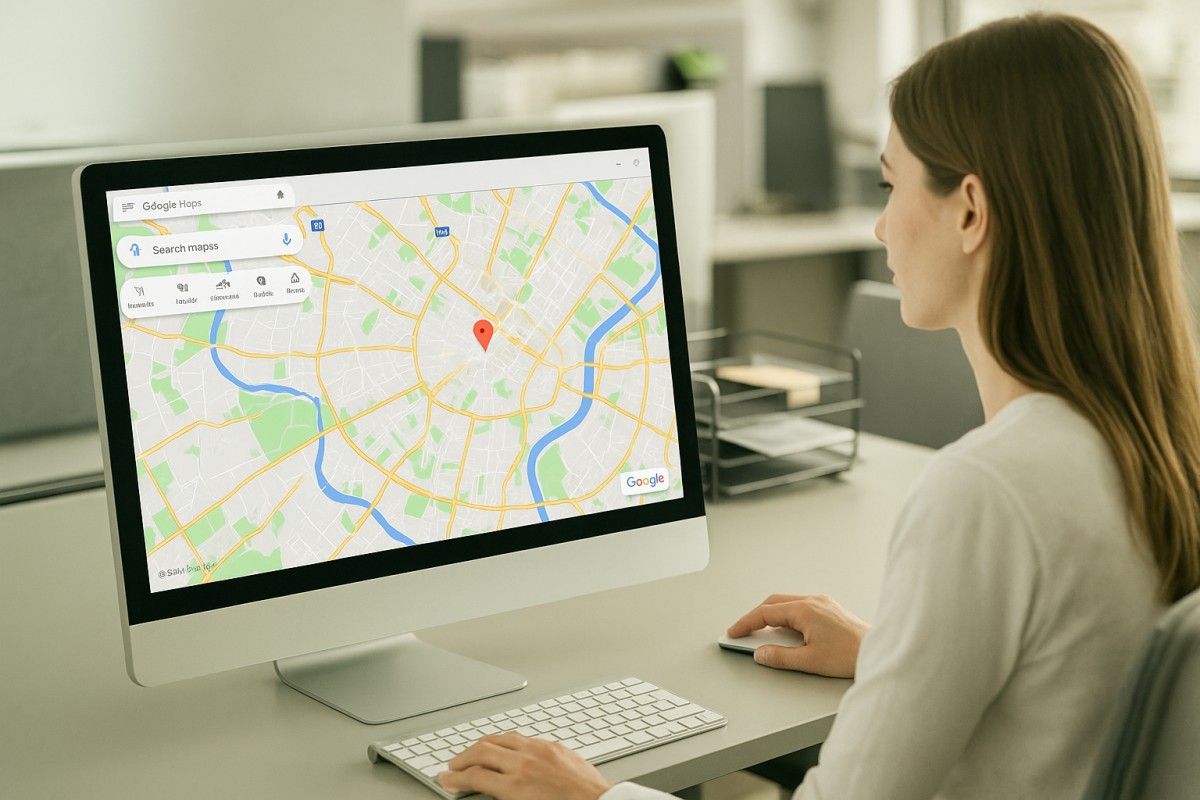 The new Google Maps enhancement adds a highly intuitive layer to this ecosystem. Now, not only are devices unified - the locations they belong to are too.
The new Google Maps enhancement adds a highly intuitive layer to this ecosystem. Now, not only are devices unified - the locations they belong to are too.
It’s this combination of data and geography that makes Quanika such a game-changer for unified facilities management. The platform doesn’t just show you what’s happening, it shows you where.
This brings enhanced productivity to teams managing dispersed estates or complex infrastructures. Instead of toggling between systems, diagrams and floor plans, users gain real-time access to all their data in one logical, interactive view.
Always up-to-date, without any hassle
A standout feature highlighted by Copland during the Security Event 2025 was the simplicity of rolling out upgrades across existing deployments. Quanika customers automatically receive updates like the Google Maps integration without disruption or the need for remote engineers.
“If we’ve already got Quanika installed in the system, all these automatic upgrades… that’ll be on the system as soon as the new upgrade comes out,” said Copland.
This approach dramatically reduces the burden on IT teams and integrators. Updates are smooth, secure and centrally-managed enabling organisations to benefit from the latest innovations instantly, without taking systems offline or requiring manual intervention.
Designed for scale across multiple sectors
Quanika’s modular design makes it highly scalable, from single sites to multi-building, multi-national environments. Whether in education, healthcare, logistics, government, or commercial office management, the platform has been adopted across sectors where complexity is high, and downtime isn't an option.
It offers full compatibility with major access control and video management systems including Axis Communications, Milestone, and third-party hardware. Integration with Microsoft’s Outlook also makes it ideal for enterprise-level planning and resource management.
Through a single interface, users can:
- Assign access rights to staff or contractors
- Monitor video surveillance in real-time or playback archived footage
- Schedule meetings or room access via Outlook
- Connect to live fire/intruder system alerts
- Access building maps and IoT sensor data
- Receive updates and automate workflows
By consolidating these workflows, Quanika removes silos, reduces operational costs and improves overall site security and efficiency.
Benefits of the Quanika Platform at a glance:
-
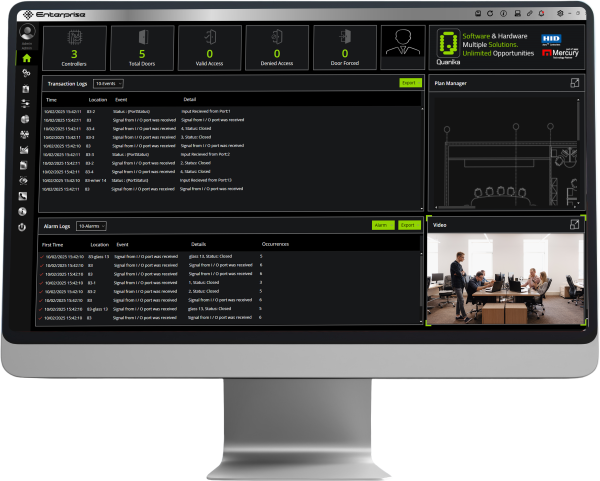 Total Site Visibility
Total Site Visibility
Live mapping, video feeds and real-time alerts - all in one place.
-
Scalable from SME to Enterprise
Whether it’s a single office or a global network, Quanika adapts.
-
Plug-and-Play Integration
Works with leading hardware and software, including Axis and Milestone.
-
Automatic Software Updates
Zero-downtime upgrades keep you on the cutting edge without added cost.
-
Microsoft Outlook Integration
Manage rooms, people and building systems through a familiar interface.
-
Smart Scheduling & Access Control
Authorise, restrict or schedule access across zones and user groups.
-
Cloud or On-Premises Deployment
Flexible architecture that meets your IT security policies.
-
Improved User Experience
Visual, intuitive UI that simplifies training and increases adoption.
Real-world impact: faster response, fewer mistakes
In critical infrastructure environments such as transport hubs, hospitals, or manufacturing sites response time is everything. Quanika’s real-time mapping reduces the need for guesswork and supports faster incident resolution.
When an alarm is triggered, operators can instantly locate the alert on the map, assess nearby video feeds, and deploy the nearest resource. Likewise, planned maintenance can be visualised and scheduled far more efficiently when viewed spatially.
It also reduces the margin for human error, a key factor when dealing with high-security or safety-critical systems.
Supporting smarter cities and connected communities
Quanika’s future roadmap includes even greater integration with urban infrastructure. With the growing adoption of smart cities and connected campuses, building management systems must evolve to become more interoperable, data-driven and automation-ready.
The addition of geospatial visualisation features like Google Maps is a key step in this journey. It opens the door to:
- Smart city-wide control centres
- Geo-fenced access and permissions
- Real-time traffic and people flow analysis
- Integration with public safety and transport data
Want to see Quanika in action?
As Copland concluded:
“If you want to find out more about multi-platform integration and, of course Quanika, join us at cie-group.com and we’ll arrange that demo for you.”
For organisations ready to simplify complexity, improve control, and step into a smarter future of building management, now is the perfect time to explore Quanika’s full potential.
|
|
Featured Products:
